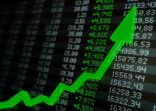Asian companies are trading at about 1.6 price-to-book and US companies are trading at roughly 2.7, which is the widest gap in ten years, Crabb said.
Volatility in world markets, which soared in September and October, is behind some negative sentiment toward emerging markets and it has created a flight to quality.
“The world has become polarised. People have been chasing [investments with] certainty, low volatility and surety of growth.
“[Therefore] the extremes in valuations between economically-sensitive companies and those that are not, is at a level we haven’t seen since the likes of the Asian financial crisis [in the late 1990s].
“This is what’s going to create opportunity going forward.”
However, valuations are key, Crabb said.
“Well-managed, high-quality companies that are growing are a fantastic investment, but much more so at 10x earnings than 20x.
“This is where we find ourselves today. China is cheap, people say. But look at what they own and it may be much more expensive within that universe.”
The price paid for the asset is the biggest potential multiplier of risk, he added.
Catalysts to close the gap
The valuation gap between emerging markets and the US will start to close as new catalysts gain momentum, helping investors focus on an opportunity set, Crabb said.
He cited political reform in the region, particularly in India, and in China privatisation of state-owned enterprises and rising levels of discretionary income.
The coming cycle in Asia will different from the last, he said. For example, consumption and investment in China have converged in terms of percentage of GDP contribution.
“We’re seeing in Asia a middle-class starting to grow and wealth radiating out to the masses. People buy more common products like a second TV or sport shoes for children.
“That has important ramifications. Money that has been exiting the system to access products in other parts of the world will change [direction].”
The rise of Asian products and companies on the global stage is another factor. Korea’s increasing R&D expenditure as a percentage of GDP over the past decade has helped Korean products gain global recognition and marketshare, he said.
“This is happening all across Asia and these are not copycat products.”
Other positive catalysts include falling commodity prices. If the fall in the price of oil remains low and it turns out to be a structural adjustment, it will be a huge positive for much of Asia, particularly India, which imports substantial amounts of oil.
US risk factor
China’s slowdown in economic growth is not a concern, Crabb said.
“The focus is often in wrong place. What we care about is future share prices, and their correlation with GDP growth is next to nothing.”
The biggest risk to a portfolio in Asia will be the path of US economic growth, he said. Company earnings have to strengthen to support growth.
“If that occurs, then places like Asia start doing better at cheap valuations. That’s what worries me the most — if something happens to the US in the short-term.”
He brushed aside currency issues. US dollar strength has not necessarily been bad for Asian markets historically, he said. Moreover, the US is making big strides in domestic shale oil production and will likely be importing a lot less oil than in the past.
“If that’s what’s happening, then the US dollar can be stronger.”
Look ahead, not back
However, Asian countries aren’t synchronized and have varying economic and investor behaviour cycles. He said it isn’t always useful to look back at what investment strategy worked before, and urged thinking outside the boundaries of conventional wisdom.
“Price-to-book [for example] is a good way to invest but it works one year in ten. After that one year in ten, the next nine it does not work so well. Different things work at different times.
“That’s important to consider because it stops you from looking back at investments in things that have worked and gets you looking at what could work.”















